Ultimate Direction Fastpack 40
Test Locations: Gunnison — Crested Butte, Colorado; Logan, Utah; Grand Canyon National Park, Arizona
Test Duration: ~100 miles
Stated Features:
- Large front storage for water, phone, maps, glasses, or food
- Unique zip-down main compartment for total access to gear
- Roll-top closure expands or compresses to secure varying capacities
- Large external stretch mesh pockets for quick access
- Sliding rail sternum straps
- Removable and height-adjustable T-hook waistbelt for heavier loads
- Easy access pocket with keyfob
- MonoRip Mesh is very strong, but extremely breathable.
- Bottles not included
Stated Storage Volume: 40.0 L / 2441 in3
Reviewer: 6’1”, 145 lbs / 185 cm, 67 kg
Size Tested: Men’s Small/Medium
Stated Weight (Pack Only): 715 g / 25.3 oz
Blister Measured Weight (Men’s size Small): 665 g / 23.5 oz
MSRP: $194.95

Intro
In case you’re unfamiliar with the term, “Fastpacking” is essentially a mix between ultra-lightweight backpacking and long-distance trail running. The basic idea is that you pack light enough for a multi-day trip so that you can run some of the miles (at least on the downhills). Given that, it makes sense that a pack designed for fastpacking would look like some kind of hybrid running vest / backpacking pack — the Ultimate Direction Fastpack 40 is just that. The Fastpack 40 is the largest-volume option in Ultimate Direction’s Fastpack line (they also make 30 L and 20 L versions), and according to Ultimate Direction, the 40 has “an optimal weight-to-capacity ratio for longer adventures over rugged terrain.” I don’t know about you, but I definitely like the sound of that.
Fit
We always recommend trying on running packs in person if possible, and the Fastpack 40 is no exception. With that in mind, I’ll provide some context on how the Fastpack 40 fits based on my experience with the pack. For reference, I have a fairly narrow chest and usually wear an XS or S in most running vests.
Unlike most running vests I’ve used, the Fastpack 40 has quite a bit of fit adjustability — it’s a bit more like a traditional backpack in that regard. You can tighten and loosen the shoulder straps and sternum straps, and the sternum straps can also slide up and down. There’s also a removable waist belt for larger / heavier loads. In my experience, all of that adjustability makes it easy to get a comfortable fit in the Fastpack 40 pretty much regardless of what I’m using it for.
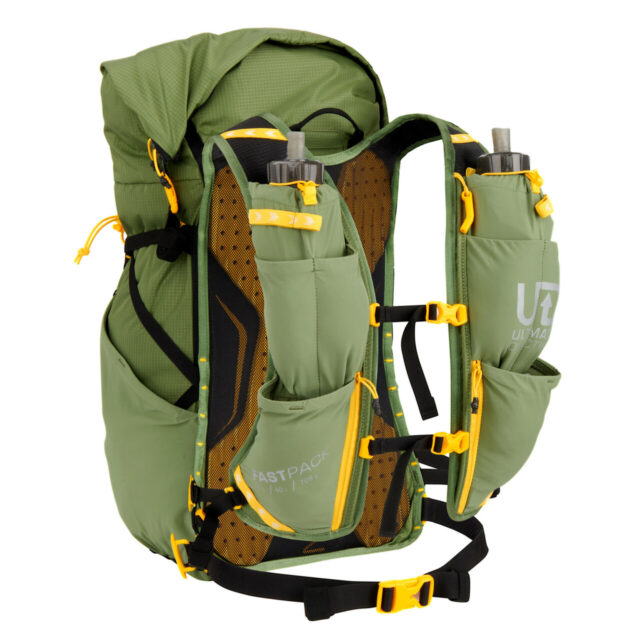
If I’m just hiking and have a heavier load, I can attach the waist belt and loosen the shoulder straps a bit to get a fit that’s just as comfortable (if not more so) than a traditional backpack like the Osprey Exos 48. For outings with more running, I usually take off the waist belt and cinch down the shoulder and sternum straps to get a more secure fit. With everything cinched down, the Fastpack 40 stays put pretty darn well for a 40 L pack when running — there is still a bit more bounce than you’d get from a true running vest like the Ultimate Direction Race Vest 5.0 but the Fastpack 40 feels astronomically better than a traditional backpack when running.
The Small / Medium Fastpack 40 also seems to have enough adjustability to truly fit people with a fairly wide range of chest and torso sizes. I’ve run into issues with other packs that cover multiple sizes (e.g., the Nathan VaporKrar 12L — they rarely seem to actually cinch down enough to fit my fairly narrow chest — so I was a little concerned I’d have the same issue with the Fastpack 40. I do come pretty close to maxing out the side straps when I really cinch down the Fastpack 40, but it does still work, and that also means that the pack has plenty of room to accommodate people with wider chests.
Sizing and adjustability aside, the Fastpack 40 is super comfortable in my experience. The wide, vest-like shoulder straps alleviate any pressure points, and the semi-rigid foam back panel does a nice job of providing some support for carrying heavier loads. The Fastpack 40’s shoulder straps also have some extra foam padding, which is a new addition from previous versions. Again, that extra padding helps keep the fit comfortable for heavier loads. The only issue I’ve noticed with the Fastpack 40’s fit is that the top corner of the foam back panel can cause some minor rubbing / chafing on my shoulder blades. This only seems to be an issue when I have the pack fully cinched down for running and have something hard (tent or trekking poles) in one of the side pockets. It’s not a major issue, but it is worth noting.
Features and Construction
For how lightweight it is, the Fastpack 40 manages to include a whole bunch of features. Each shoulder strap has 5 pockets: a large, open-topped soft-flask pocket with an elastic drawstring, two long and skinny stretch-mesh pockets, a large open-topped stash pocket below the soft-flask pocket, and a zippered pocket under the stash pocket. The right-hand zipper pocket also has an inner stretchy pocket for smaller items. Like most of Ultimate Direction’s packs, the chest straps also have elastic loops for storing folding trekking poles. As I mentioned in the fit section, the shoulder straps are attached to the back of the pack by an adjustable strap. They’re also padded with a thin layer of foam. The Fastpack 40 has two sternum straps, both of which slide up and down for additional fit customization. And last but not least, the Fastpack 40 has a fairly basic removable hip belt.
Moving on to the back of the pack, the Fastpack 40 has 6 more pockets: the large roll-top main pocket, two stretchy side pockets, a small vertical side pocket with a clip for keys, a large open-topped stretchy rear pocket, and a larger zippered pocket across the top of the back of the pack. There’s also a zipper that runs along the right side of the main pocket, which makes it easy to access items lower down in the main compartment without opening the top and taking everything out of the pack. There’s also an additional set of elastic loops for folding trekking pole storage on the back of the pack, along with zig-zag side compression straps.
The Fastpack 40’s back panel and chest straps use a combination of two fancy-sounding technologies to improve comfort and breathability: an “InfiKnit” seamless harness and “FastFlow” perforations / ridges. In layman’s terms, that just means that the back panel has a series of vertical ridges to allow for better airflow, and both the back panel and shoulder strap padding have closely spaced perforations to provide additional breathability. The tops of the shoulder straps also transition seamlessly into the top of the back panel to eliminate hot spots.

Weight
There are two ways of looking at the Fastpack 40’s weight. If you compare it to a larger-capacity running vest, the Fastpack 40 will probably seem pretty heavy. But if you compare it to a traditional 40 L backpack, it’s almost certainly going to be way lighter. For some more specific comparisons, here’s how the Fastpack 40 stacks up to high-capacity running vests and ultralight backpacking packs from a few other brands (All stated weights are for pack only, not including bladders / bottles):
390 g / 13.7 oz — Inov-8 Adventure Lite 15 (15 L)
443 g / 15.6 oz — Salomon XA 25 (25 L)
577 g / 20.4 oz — Hyperlight Mountain Gear Daylight (23 L)
715 g / 25.3 oz — Ultimate Direction Fastpack 40 (40 L)
1077 g / 38 oz — Osprey Talon 33 (33 L)
1105 g / 39 oz — Six Moon Designs Flight 40 FKT (44 L)
1814 g / 64 oz — UltrAspire Epic XT 2.0 hydration pack (30 L)
So, the Fastpack 40 is way heavier than smaller packs like the Salomon XA 25 or Inov-8 Adventure Lite 15, but it’s way lighter than many other packs with similar volumes. As Ultimate Direction advertises, the Fastpack 40’s storage-to-weight ratio is pretty hard to beat. In practice, the Fastpack 40 definitely feels light for a 40 L pack. It feels much more like a running vest than a backpacking pack, from a weight perspective. That lower weight does mean that it doesn’t have as much structure / support for carrying heavier loads as something like the Six Moon Designs Flight 40 FKT, but if keeping weight to a minimum is your top priority, the Fastpack 40 is definitely a worthy option.
On The Trail
As I alluded to in the intro, I’ve used the Fastpack 40 in a variety of settings. On the running side of things, I used the Fastpack 40 when I ran rim-to-rim-to-rim in the Grand Canyon earlier this year because I wanted to be able to carry quite a bit of extra gear. I’ve also tested the Fastpack 40’s multi-day capabilities, and I’ve been impressed by the pack’s performance on both ends of the spectrum.
One of my biggest criteria for any pack — whether it’s a running vest or a backpacking pack — is how usable the storage is. Are the pockets in the right places, and are they the right size to be useful for whatever they’re designed to carry? I think the main reason I’ve been so happy with the Fastpack 40 is that it totally hits the nail on the head as far as storage goes. The abundance of pockets on the shoulder straps (10 total) makes it easy to store my phone, two soft flasks, enough food for a couple of hours, and some light gloves or a Buff in easily accessible pockets. I also like that the shoulder straps have both open-topped pockets for easy access and zipper pockets for storing keys and other valuables that you don’t want bouncing out. All of that front storage is particularly useful when running, but I’m equally stoked to not have to take off my pack just to get out my phone and take a picture on a leisurely hike.
The storage on the back of the Fastpack 40 is equally well thought out. It’s easy to reach around and access the large stretchy side pockets without removing the pack, and the vertical zipper along the side of the main compartment is a major plus. One of my pet peeves with roll-top packs is that it’s super hard to access the stuff in the bottom of the pack without totally unpacking — the Fastpack 40’s vertical-access zipper alleviates that problem. The Fastpack 40 is also the first running / hiking hybrid pack I’ve found that can actually carry everything I need for multi-day adventures. The large main compartment fits my summer-weight sleeping bag, pad, and a tarp or bivy with plenty of room to spare. And while the pack does bounce around more with all of that gear in it, it still carries way better when running than other packs I’ve used with similar volumes.
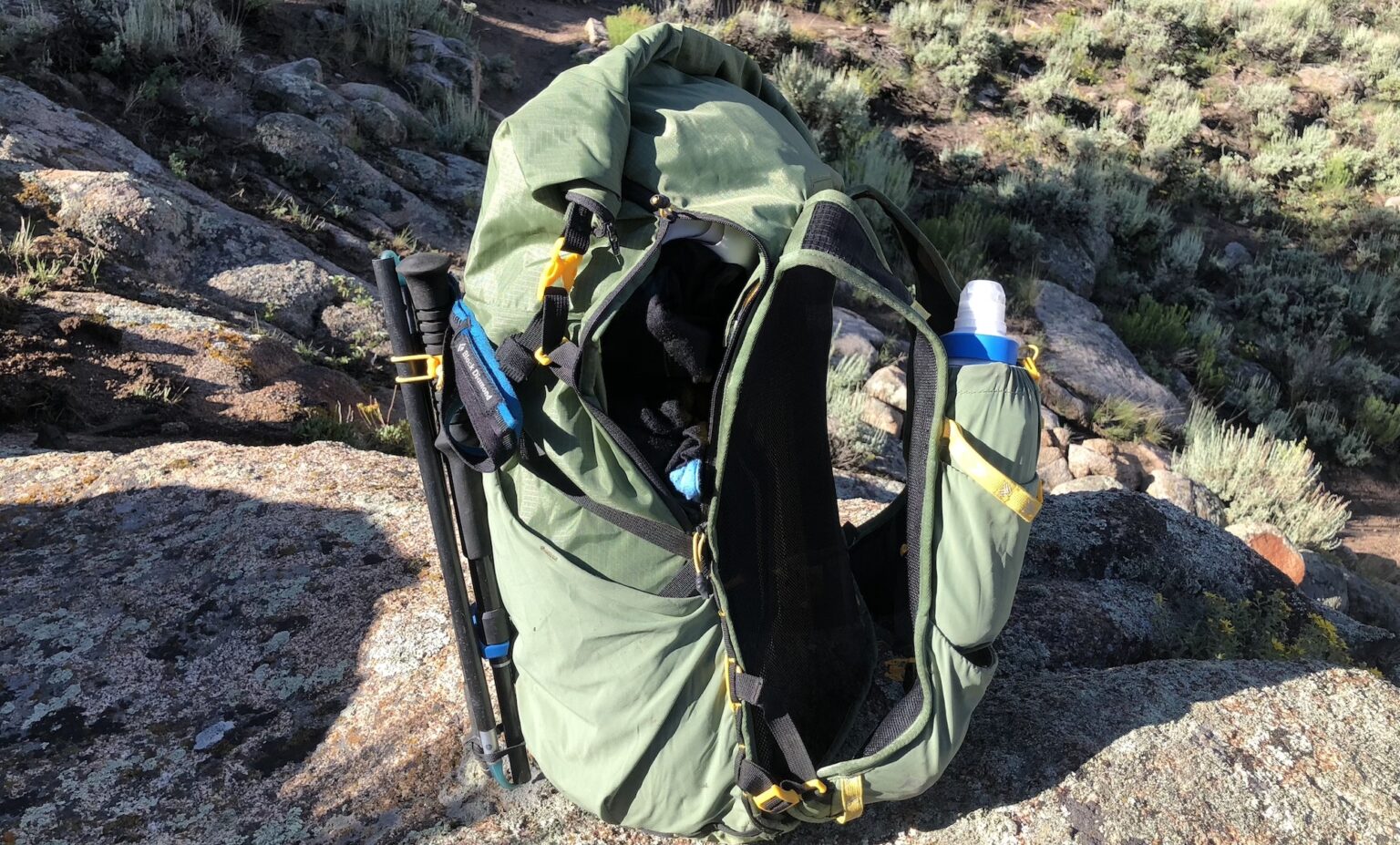
I really only have two critiques of the Fastpack 40 thus far: the pole storage system and the pack’s overall length (or rather, lack thereof). I love the idea of the front pole storage system for its convenience, but storing poles on the front of the pack makes it basically impossible to access whatever you have in the large, open-topped stash pockets. In my book that’s fine for short periods of time, but I usually use those pockets for food storage, so having them blocked by my poles gets old pretty quickly. Of course, the Fastpack 40 also has a rear pole storage system that works great, but you do have to take off the pack to stow your poles there. Obviously, that’s not a huge issue in the grand scheme of things, but it’d be awesome if Ultimate Direction could come up with an accessible pole storage system that didn’t block off any pockets.
I think my other issue with the pack is mostly just a result of my particular body shape, but I also think there are plenty of tall and skinny runners / backpackers out there, so it’s definitely worth mentioning. My chest is narrow enough that I definitely need a size Small / Medium in the Fastpack 40. But the S/M is also fairly short, and since I have a pretty long torso, that means that the whole pack rides fairly high up on my back. This causes two issues. First, if I actually stuff the pack completely full, the top of the rear roll-top pocket sticks up behind / above my head, which totally throws off the pack’s center of mass. I don’t really foresee totally filling the Fastpack 40 very often, but it does somewhat limit the pack’s actual usable storage capacity. Second, because the pack rides so high up, the removable “hip belt” actually crosses pretty much directly over my stomach. If you’ve ever tried running or hiking with a belt cinched around your stomach, you’re probably well aware of the issues that can cause. As a result, I pretty much never use the hip belt. Again, that’s not a major issue 95% of the time, but it is a bit of a bummer for the other 5% when I have a heavier load and would appreciate a little more support. I’ll reiterate that those issues are probably pretty specific to my particular body shape, but if you also happen to fit into the tall and skinny category, they’re worth being aware of.
Durability
So far, I’ve been very impressed by the Fastpack 40’s durability. I’ve been using the pack pretty frequently on hikes and runs for several months now and it looks pretty much the same as it did out of the box (only quite a bit dirtier). Many ultralight backpacks (and other ultralight gear) keep weight down by using extremely thin, often fairly fragile fabrics and straps. The Fastpack 40, on the other hand, is mostly made of what I’d call a moderate-weight ripstop nylon fabric that’s held up to all kinds of abuse so far. I’ve done plenty of bushwhacks in the Fastpack 40 and it has handled the extra wear and tear just fine. Of course, I’d expect a pack like the Fastpack 40 to last years rather than months, so I’ll have to wait until I’ve used the pack more to get a true sense of its long-term durability. If I run into any unforeseen issues down the road, I’ll be sure to update this section.
Who’s It For?
I think the Fastpack 40 is a solid option for anyone looking for a larger-capacity pack that can handle both running and hiking — whether that’s on a multi-day fastpacking trip or just a single-day outing that requires more gear than a standard running vest can handle. As with most “hybrid” products, the Fastpack 40 won’t be as good as a more specialized pack on either end of the spectrum. If you’re just going out for a long run and want to carry some food, water, and an extra layer, a dedicated running vest will be way more comfortable. Conversely, if you’re going out for a long backpacking trip and need to carry a significant amount of weight, a legit backpacking pack with more support will almost certainly meet your needs better than the Fastpack 40.
But for those use cases that fall in between — day hikes, shorter multi-day outings, full-day runs with more gear, or just commuting to work — the Fastpack 40 is definitely a solid option in my opinion.
Bottom Line
Based on my experience with it so far, the Ultimate Direction Fastpack 40 does an excellent job of bridging the gap between a running vest and a traditional backpacking pack. It has abundant and convenient storage, a comfortable and adjustable fit, and an intuitive design. As with any product, there are a few quirks — namely the pack’s relatively short fit — but in the case of the Fastpack 40, they’re pretty minor. If you’re on the market for a large-capacity, comfortable, lightweight, stable, and versatile pack, I think the Fastpack 40 is definitely worth checking out.

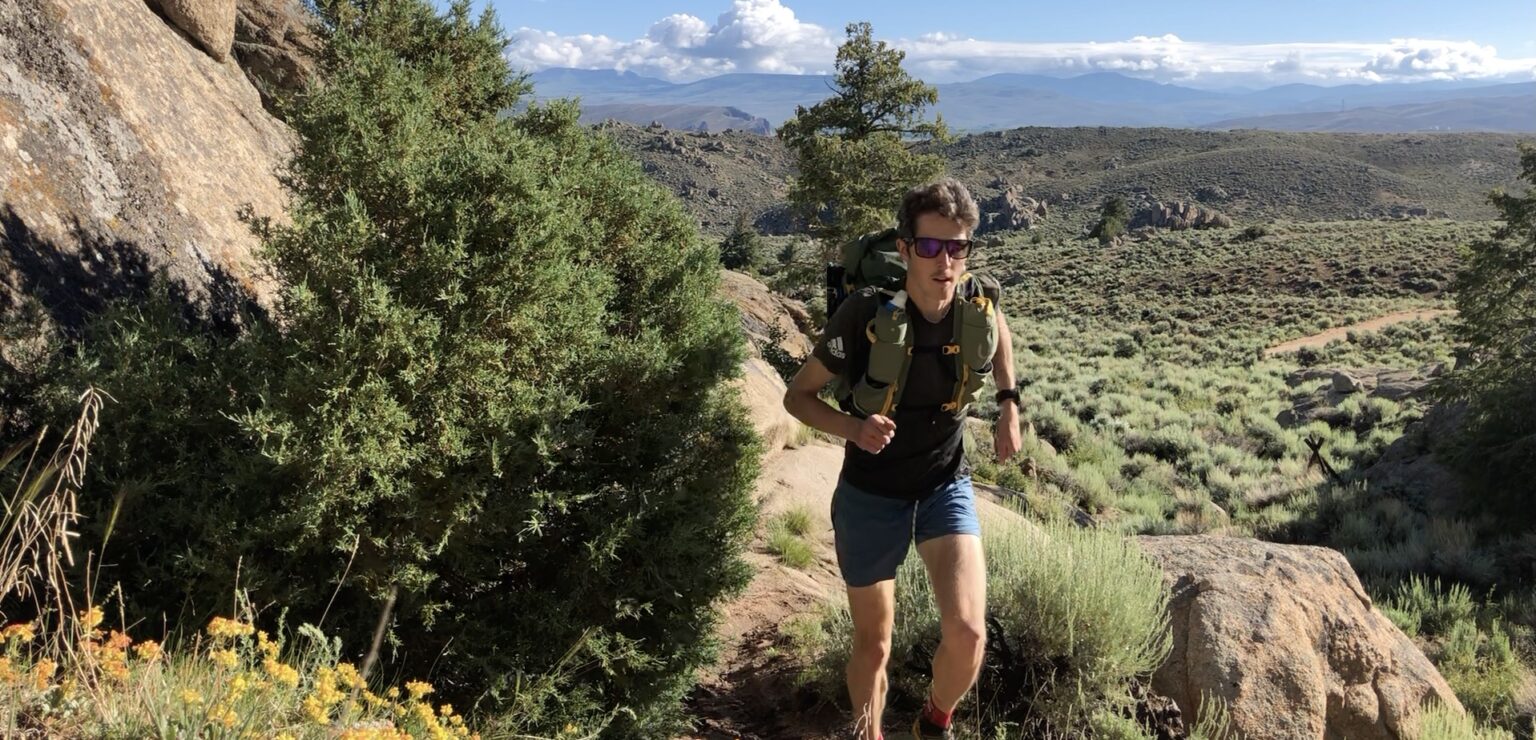
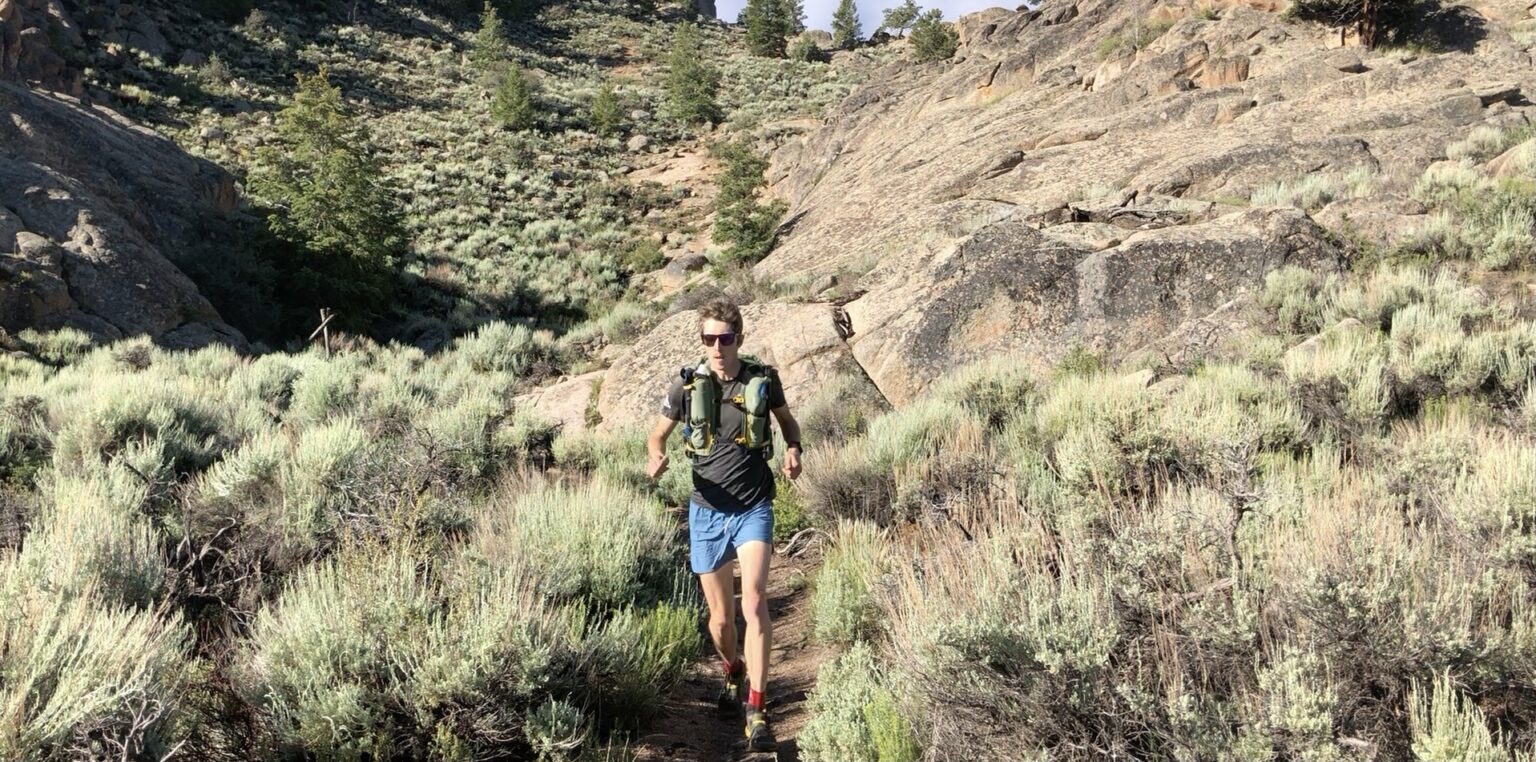


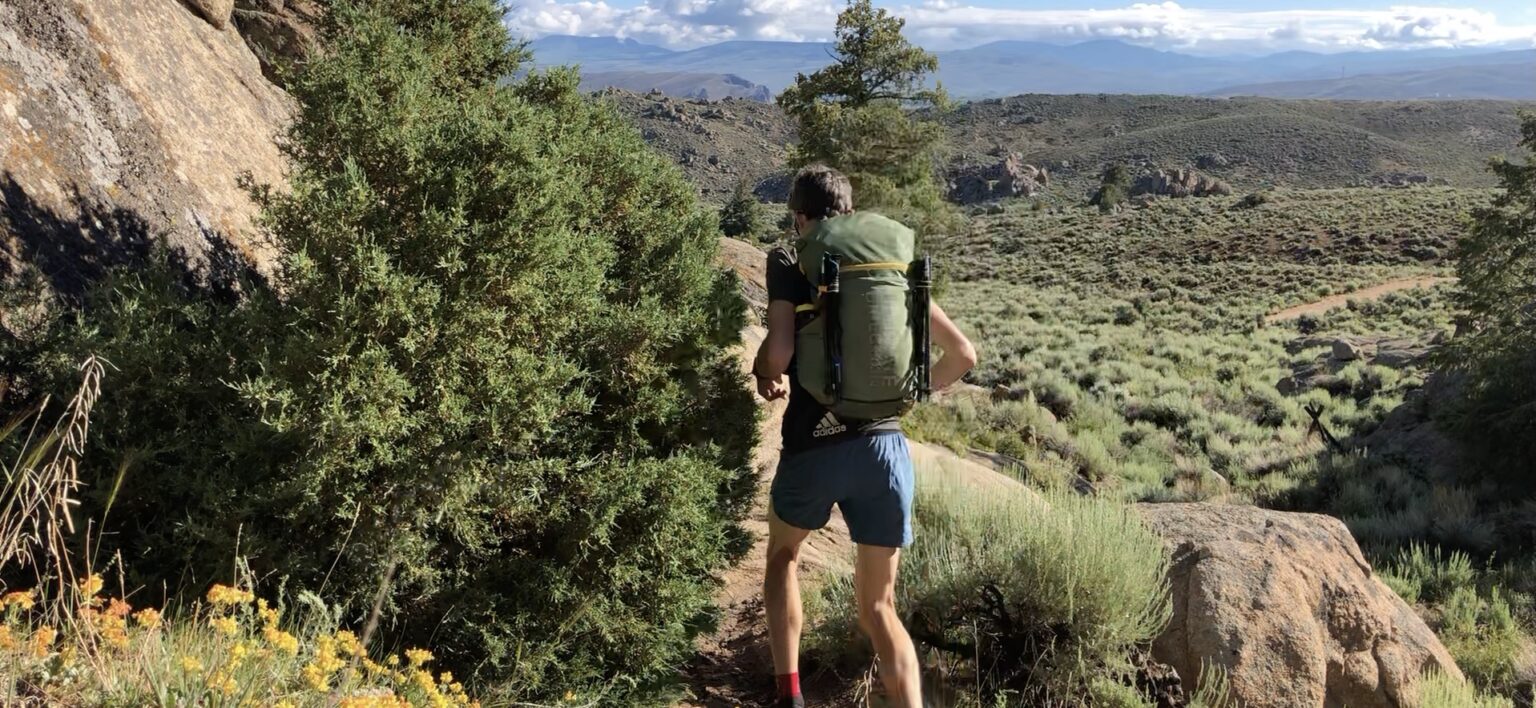
As someone who is 6’ 2” and 150 lbs i increasingly think we need our own brand, my sleeves often dont fit or the cut is super baggy with jackets and shirts, 30-36 pants are impossible to find, 191 skis are often too stiff, same with xl or xxl bikes, the list goes on…
Hi, I’m female, 5’9″, 135 lbs and I bought the S/M for backpacking. I love the fit but the hip belt is a bit high. I removed it for a spell then realized it does stabilize the pack a little, more than I thought.
My question is: Are fastpacks designed more to fit against the back instead of weight on the hips? Is that part of the running aspect with a fairly big pack? I love the fit against my back, just wondering if hip belts are a big deal with fastpackers and fastpacks themselves – or not. Thanks so much – great review, too!
Hi Jane,
Thanks for reading! I can’t speak to all fastbacks, but the Fastpack 40 is definitely designed to fit more like a running vest (weight against the back / on the shoulders) rather than a traditional backpacking pack (weight mostly on the hips). In my experience, the Fastpack 40’s hip belt was mostly just helpful for reducing bounce with heavier loads rather than changing the weight distribution — but it also felt pretty high to me, so I mostly haven’t been using it. Hope that answers your question!
Thanks for answering my question, Gordon! That’s great help – you confirmed (ahem, reminded me) that this pack fits like a running vest more than a traditional pack. I love how the lower pockets on the front kind of support my core. I think this will be the way of the future in pack design – more storage upfront with a little core support, a great win-win.
Thanks again, this is very helpful and you were really prompt. Happy fastpacking!
Has anyone tried to use this for skiing?? Curious how it would work. Big question: can you fit a shovel blade in the large horizontal zipper pocket on the back? (Yellow zipper above big stretch pocket.)
I wore my buddy’s 15 lb. UD 20 for an hour on the trail yesterday. I loved the fit. But, adjusting the shoulder straps on the fly was seemingly not possible so we just left them as is. Were we missing something?
I was thinking of getting the 40L size and would use it in winter with bulkier clothing. Any ideas how that would work out fit-wise? I’m 5’8″ and weigh 175.